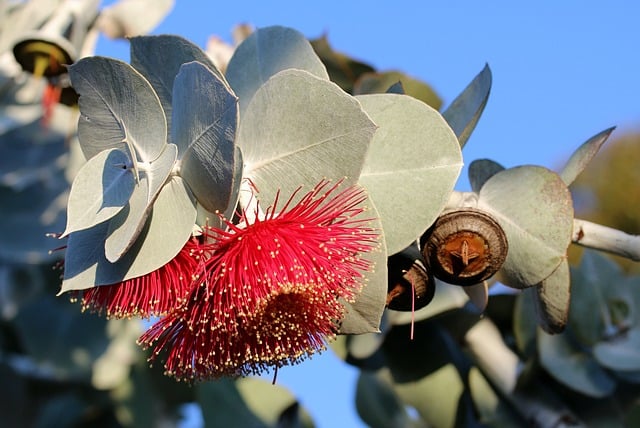Eucalyptus plants are known for their aromatic scent and beautiful foliage, but they can be finicky when it comes to their care. If your eucalyptus plant is looking a little under the weather, don’t worry – there are steps you can take to revive a dying eucalyptus plant.
In this article, we will explore the common causes of a dying eucalyptus plant and provide practical tips for how to bring it back to life.
Understanding the needs of your eucalyptus plant is the first step in reviving it. Eucalyptus plants are native to Australia and require specific conditions to thrive. They prefer full sunlight, well-draining soil, and regular watering.
Overwatering or underwatering can lead to root rot or dehydration, which are common causes of a dying eucalyptus plant. Additionally, eucalyptus plants are susceptible to pests and diseases, which can weaken the plant and cause it to decline.
Identifying the signs of a dying eucalyptus plant is crucial for determining the best course of action. Yellow or brown leaves, wilting, and stunted growth are all indicators that your plant is in distress.
By taking a closer look at the plant and its environment, you can determine the underlying cause of its decline and take steps to address it. With a little care and attention, your eucalyptus plant can be revived and thriving once again.
Key Takeaways
- Understanding the needs of your eucalyptus plant is crucial for its health.
- Identifying the signs of a dying eucalyptus plant is the first step in reviving it.
- Common causes of a dying eucalyptus plant include overwatering, underwatering, pests, and diseases.
Check out these other top posts:
Understanding Eucalyptus Plant

Eucalyptus plants are evergreen trees that are native to Australia. They are known for their aromatic leaves, which are often used in essential oils, herbal remedies, and even in cooking. Eucalyptus plants can grow up to 60 meters tall in their natural environment, but they can also be grown as indoor plants or potted plants.
Eucalyptus plants are a popular choice for indoor plants because they are relatively easy to care for and can add a touch of green to any space. However, they can be prone to certain issues that can cause them to wilt or die.
One important thing to note about eucalyptus plants is that they require a lot of sunlight to thrive. They should be placed in a sunny location where they can receive at least six hours of direct sunlight each day. If they are not getting enough sunlight, their leaves may start to turn yellow and fall off.
Another important factor to consider when caring for eucalyptus plants is their water requirements. Eucalyptus plants should be watered regularly, but they should not be overwatered.
Overwatering can cause the roots to rot and can lead to the plant’s death. Instead, the top two inches of soil should be allowed to dry out before watering again.
Eucalyptus plants also require well-draining soil to prevent water from pooling around the roots. If the soil is not well-draining, it can lead to root rot and other issues.
Identifying Signs of a Dying Eucalyptus
Eucalyptus plants are generally hardy and can withstand a variety of growing conditions. However, if your eucalyptus plant is showing signs of decline, it may be time to take action. Here are some common signs that your eucalyptus plant is dying:
- Yellow leaves: Yellowing leaves are a sign that your eucalyptus plant is not getting enough water. If the leaves are only yellow at the tips, this may indicate a lack of humidity. If the entire leaf is yellow, it may be a sign of a nutrient deficiency.
- Brown spots: Brown spots on eucalyptus leaves can be caused by a number of factors, including fungal infections, insect infestations, or exposure to extreme temperatures.
- Peeling bark: Peeling bark is a sign that your eucalyptus plant is stressed. This can be caused by a lack of water, nutrient deficiencies, or insect infestations.
- Brown leaves: Brown leaves are a sign that your eucalyptus plant is not getting enough water or nutrients. This can be caused by overwatering or underwatering, as well as nutrient deficiencies.
- Dying plant: If your eucalyptus plant is dying, it may be due to a combination of factors. Common causes of a dying eucalyptus plant include fungal infections, insect infestations, nutrient deficiencies, and extreme temperatures.
It is important to identify the specific cause of your eucalyptus plant’s decline in order to take appropriate action. If you notice any of these signs, it is important to investigate further and take action as soon as possible to save your eucalyptus plant.
Common Diseases and Pests
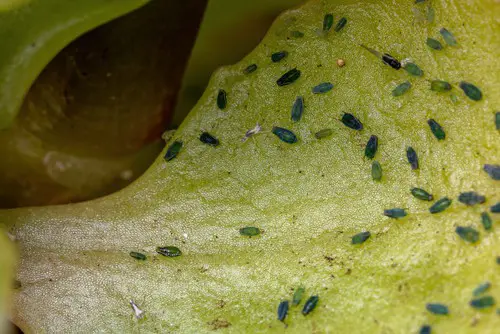
Eucalyptus plants are susceptible to a variety of diseases and pests that can cause them to wilt and die. Here are some of the most common issues to look out for:
1. Fungal Diseases
Fungal diseases such as powdery mildew and rust can affect eucalyptus plants. These diseases can cause discoloration and distortion of the leaves, and eventually lead to leaf drop. Proper care, including watering and fertilization, can help prevent fungal diseases. If your plant is already infected, you can treat it with a fungicide.
2. Pest Infestation
Pests such as beetles can also attack eucalyptus plants, causing damage to the leaves and bark. Regular inspection of your plants can help you catch any pest infestations early on. You can also use insecticides to treat the infestation.
3. Collar Rot and Sap Rot
Collar rot and sap rot are fungal diseases that can cause the base of the tree to rot, eventually leading to death. These diseases are caused by overwatering or poor drainage. To prevent collar rot and sap rot, make sure your eucalyptus plant is planted in well-draining soil and is not overwatered.
4. Phytophthora
Phytophthora is a fungal disease that affects a huge number of woody plants, including eucalyptus. It can attack all parts of the tree and is often evidenced by wilted, yellowing foliage, stunted growth, and reddish, orange or brown cankers on the trunk and stems or under the bark.
Proper care and treatment with fungicides can help prevent and treat Phytophthora.
Overwatering and Underwatering

Overwatering and underwatering are two common causes of eucalyptus plant death. Eucalyptus plants require moderate watering, and it is essential to maintain the right balance to keep them healthy.
Overwatering
Overwatering can lead to root rot, which is a fungal disease that causes the roots to decay. Signs of overwatering include yellowing leaves, wilting, and a mushy stem. If the soil is consistently wet, it may be a sign of overwatering.
To revive an overwatered plant, the first step is to stop watering it. Allow the soil to dry out completely before watering again. It may take several days for the soil to dry out, depending on the environment and location of the plant.
Gently pull off any loose yellow leaves and do not water the plant as often. If the plant does not show signs of improvement, move it to another part of the house that has less humidity.
Underwatering
Underwatering can cause the leaves to wilt, turn brown, and fall off. The soil may also become dry and crumbly. To revive an underwatered plant, the first step is to water it thoroughly. It is important to ensure that the water reaches the roots. The soil should be moist but not waterlogged.
To prevent underwatering, it is essential to monitor the soil moisture regularly. Eucalyptus plants require moderate watering, and the soil should be allowed to dry out slightly before watering again. It is also important to ensure that the pot has adequate drainage to prevent water from accumulating at the bottom.
Light and Temperature Requirements
Eucalyptus plants require a lot of sunlight to thrive. When planted in the ground, they should receive full sun. However, if you have an indoor eucalyptus plant, it may not be able to receive full sun, so it’s important to find a spot in your home that gets the most light possible.
If you notice that your eucalyptus plant is not getting enough light, you may see the leaves start to droop or turn yellow. To avoid this, make sure your plant is getting at least 6 hours of direct sunlight per day. If you can’t provide this much light, consider supplementing with a grow light.
In addition to light, temperature is also important for eucalyptus plants. They prefer temperatures between 65 and 71 degrees Fahrenheit. If the temperature drops below 50 degrees Fahrenheit, your eucalyptus plant may start to drop leaves or even die.
If you have an indoor eucalyptus plant, make sure it’s not near any drafts or air conditioning units that could cause the temperature to drop too low. If you live in a colder climate, you may need to move your eucalyptus plant to a warmer room or provide additional heat with a space heater.
Soil and Repotting
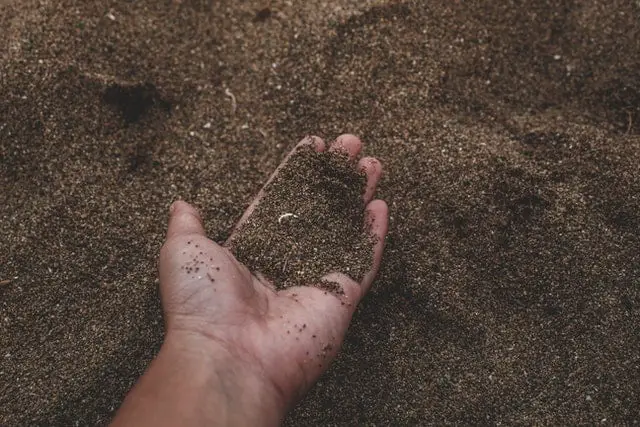
When it comes to reviving a dying eucalyptus plant, soil quality and repotting are crucial factors. The right soil conditions can help the plant recover, while repotting can prevent further damage to the roots.
Eucalyptus plants prefer well-draining soil with a pH between 6.0 and 7.0. If the soil is too acidic or alkaline, it can affect the plant’s ability to absorb nutrients. It’s important to test the soil pH regularly and adjust it accordingly using pH adjusters or organic matter.
When planting eucalyptus in a container, make sure the pot has drainage holes to prevent water from accumulating at the bottom. This can lead to root rot, which is a common cause of eucalyptus plant death. Adding perlite, sand, or other materials to the soil mix can improve drainage and prevent waterlogging.
Repotting a eucalyptus plant can also help revive it. If the plant is root-bound, meaning the roots have grown too large for the container, it can cause stress and hinder growth. Repotting into a larger container with fresh potting soil can give the roots more room to grow and access to nutrients.
When repotting, carefully remove the plant from its current container and gently loosen the roots. Trim any damaged or rotting roots and replant the eucalyptus in the new container with fresh soil. Water the plant thoroughly and avoid fertilizing for the first few weeks to allow the roots to adjust.
Feeding Your Eucalyptus Plant
To revive a dying eucalyptus plant, it is essential to ensure that it is receiving the proper nutrients. Eucalyptus plants require a balanced fertilizer to grow and thrive. A balanced fertilizer contains equal amounts of nitrogen, phosphorus, and potassium (NPK).
When fertilizing a eucalyptus plant, it is important to avoid over-fertilizing, as this can cause damage to the plant. Over-fertilization can lead to excessive growth, which can weaken the plant and make it more susceptible to pests and diseases.
To fertilize a eucalyptus plant, it is best to use a slow-release fertilizer. Slow-release fertilizers provide a steady supply of nutrients over an extended period, which helps to promote healthy growth and prevent over-fertilization.
It is recommended to fertilize eucalyptus plants once every two months during the growing season. During the winter months, eucalyptus plants do not require as much fertilizer, so it is best to reduce the frequency of fertilization.
In addition to fertilizing, it is important to ensure that the eucalyptus plant is receiving enough water. Eucalyptus plants require regular watering, especially during hot, dry weather. However, it is important not to overwater the plant, as this can lead to root rot and other problems.
By providing your eucalyptus plant with the proper nutrients and care, you can encourage new growth and help to revive a dying plant.
Pruning and Maintenance

Pruning and maintenance are essential for keeping eucalyptus plants healthy and thriving. Regular pruning helps to remove damaged or diseased branches, promote new growth, and maintain the plant’s shape and size. Here are some tips for pruning and maintaining your eucalyptus plant:
- Pruning: Prune your eucalyptus plant in early spring or late winter before new growth begins. Use sharp pruning shears to make clean cuts, and avoid tearing or damaging the bark. Remove any dead, diseased, or damaged branches by cutting them back to the nearest healthy branch or the trunk. Prune back any branches that are crossing or rubbing against each other, as they can cause damage and disease. If your eucalyptus plant is young, prune it lightly to encourage bushier growth.
- Damage: Eucalyptus plants can suffer from various types of damage, including wind damage, pest damage, and disease. If your eucalyptus plant has suffered from wind damage, remove any broken or damaged branches and stake the plant to prevent further damage. If your eucalyptus plant has pest damage, treat it with an appropriate insecticide or pesticide. If your eucalyptus plant has disease, remove any infected branches and treat the plant with a fungicide.
- Removal: If your eucalyptus plant is severely damaged or diseased, you may need to remove it. To remove a eucalyptus plant, cut it down to the ground and remove the stump. Be sure to dispose of the plant and stump properly to prevent the spread of disease.
Remember to always wear gloves and eye protection when pruning your eucalyptus plant, as the sap can be irritating to the skin and eyes. By following these tips for pruning and maintenance, you can help your eucalyptus plant stay healthy and beautiful.
Reviving Your Eucalyptus Plant
Reviving a dying eucalyptus plant can be a challenge, but it is not impossible. With proper care and attention, you can bring your plant back to life. Here are some steps you can take to revive your eucalyptus plant.
1. Check the Soil
One of the main reasons why eucalyptus plants die is due to overwatering or underwatering. Before you take any other steps, check the soil moisture level. If the soil is too dry, water the plant thoroughly.
If the soil is too wet, allow it to dry out before watering again. It is important to maintain consistent soil moisture levels to keep your eucalyptus plant alive.
2. Prune the Plant
If your eucalyptus plant is looking sickly, it may be time to prune it. Pruning can help remove any dead or diseased leaves and encourage new growth. Use sharp pruning shears to cut back any dead or damaged branches. Be sure to sterilize your pruning shears before and after use to prevent the spread of disease.
3. Provide Proper Lighting
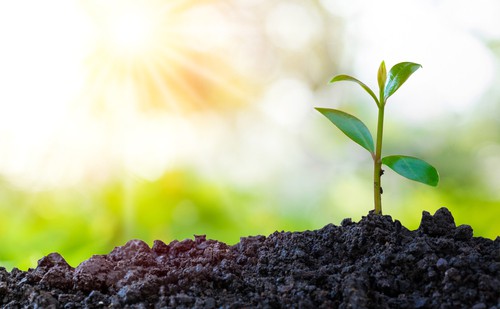
Eucalyptus plants require bright, indirect sunlight to thrive. If your plant is not getting enough light, it may start to wilt or die. Move your plant to a brighter location or provide additional lighting using grow lights. Avoid placing your eucalyptus plant in direct sunlight, as this can scorch the leaves.
4. Fertilize the Plant
Eucalyptus plants require regular fertilization to stay healthy. Use a balanced fertilizer with equal amounts of nitrogen, phosphorus, and potassium. Apply the fertilizer according to the instructions on the package. Be sure not to over-fertilize, as this can damage the plant.
5. Monitor the Plant
Reviving a dying eucalyptus plant requires patience and attention. Monitor your plant regularly to ensure it is getting the care it needs. Watch for signs of improvement, such as new growth or healthy leaves. If your plant is not responding to your efforts, it may be time to seek professional help.
Additional Information
Eucalyptus plants are generally easy to care for, but they can be susceptible to certain conditions that can cause them to wilt or die. In addition to the tips provided earlier, here are some additional pieces of information to help you revive your dying eucalyptus plant.
1. Humidity and Shade
Eucalyptus plants thrive in areas with high humidity, so if you live in a dry climate, you may need to increase the humidity around your plant. One way to do this is to place a tray of water near the plant or to mist the leaves with water. However, be careful not to overwater your plant, as this can lead to root rot.
Eucalyptus plants also prefer partial shade, especially during the hottest parts of the day. If your plant is in direct sunlight for too long, it can become stressed and wilt. Consider moving your plant to a shadier location or providing some shade with a sheer curtain or shade cloth.
2. Eucalyptus Oil
Eucalyptus oil is a popular essential oil that is derived from the leaves of eucalyptus plants. While eucalyptus oil has many medicinal properties, it is important to note that it can be toxic if ingested in large quantities. If you have pets or small children, be sure to keep eucalyptus oil and any products containing it out of reach.
3. Heart Rot
Heart rot is a fungal disease that can affect eucalyptus trees. It can cause the tree to become weakened and eventually die. If you notice signs of heart rot in your eucalyptus plant, such as soft or discolored wood, it is important to act quickly to prevent the disease from spreading.
Remove any affected branches or wood and dispose of them properly.
4. Frost and Freeze
Eucalyptus plants are generally hardy and can tolerate cold temperatures, but they can be damaged by frost or freeze. If you live in an area with cold winters, be sure to protect your plant from freezing temperatures by covering it with a blanket or tarp.
If your plant does get damaged by frost or freeze, wait until spring to prune any dead or damaged branches.
5. Medicinal Properties
Eucalyptus plants have many medicinal properties and are commonly used in aromatherapy and natural remedies. The leaves contain compounds that can help to reduce inflammation and relieve respiratory issues.
However, it is important to note that eucalyptus can be toxic if ingested in large quantities, so be sure to use it only as directed and keep it out of reach of children and pets.
6. Dryness
Eucalyptus plants prefer well-draining soil, so if your plant is in a pot, make sure that the soil is not too wet or too dry. The top layer of soil should be allowed to dry out before watering again.
If the soil is too dry, the leaves may wilt and the plant may become stressed. Consider using a moisture meter to help you determine when to water your plant.
Frequently Asked Questions
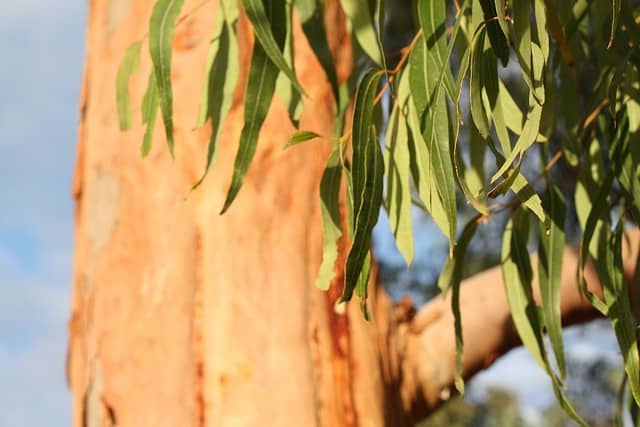
Why is my eucalyptus plant crispy?
If the leaves of your eucalyptus plant are crispy, it is likely due to underwatering. Eucalyptus plants need to be watered regularly, especially during hot weather. Make sure to water your plant when the top two inches of soil are dry.
Indoor eucalyptus plant drying out?
Indoor eucalyptus plants may dry out due to lack of humidity. Eucalyptus plants are native to Australia, where the climate is humid. To increase humidity, you can use a humidifier or place a tray of water near the plant.
Why is my eucalyptus tree losing its leaves?
Eucalyptus trees may lose their leaves due to stress caused by environmental factors such as drought, overwatering, or extreme temperatures. Pests and diseases can also cause leaf loss. Proper care and maintenance can help prevent leaf loss.
How do I know if my eucalyptus tree is dying?
Signs that your eucalyptus tree may be dying include yellowing or browning leaves, leaf drop, and a lack of new growth. If you suspect your tree is dying, inspect the trunk and branches for signs of damage or disease.
Why is my eucalyptus plant leaves turning brown?
Eucalyptus plant leaves may turn brown due to overwatering, underwatering, or exposure to extreme temperatures. Brown leaves can also be a sign of pest or disease infestation.
Do eucalyptus trees lose their leaves in winter?
Eucalyptus trees may lose some leaves in winter, but they are generally evergreen. However, some species may drop their leaves during periods of drought or stress. If you notice excessive leaf loss, it may be a sign of a problem with the tree.

Hey, I’m Lisa and I’ve been an avid gardener for over 30 years. I love writing, talking and living in the garden! Feel free to connect with me on my socials below

